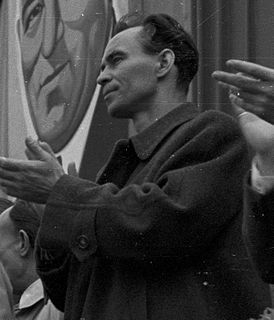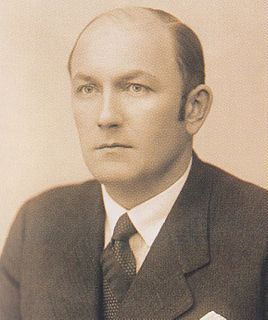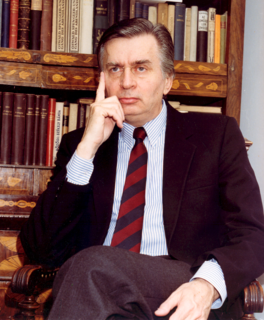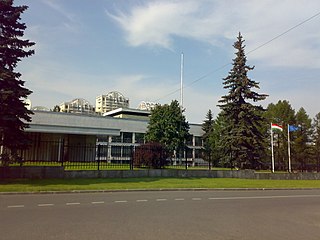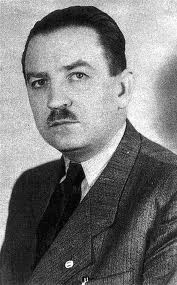| ||||||||||||||||||||||
All 402 seats in the National Assembly 202 seats needed for a majority | ||||||||||||||||||||||
|---|---|---|---|---|---|---|---|---|---|---|---|---|---|---|---|---|---|---|---|---|---|---|
| Turnout | 94.66% | |||||||||||||||||||||
| ||||||||||||||||||||||
| ||||||||||||||||||||||
 |
|---|
| This article is part of a series on the politics and government of Hungary |
Executive |
| Foreign relations |
Parliamentary elections were held in Hungary on 15 May 1949. [1] The Hungarian Independent People's Front, an umbrella group created that February to replace the National Independence Front and led by the Hungarian Working People's Party (as the Hungarian Communist Party had been renamed following a merger with the Hungarian Social Democratic Party), but also including the remaining four non-communist parties, ran a single list of candidates espousing a common programme. [2] With all organised opposition having been paralaysed, [3] the Front won 95.6% of the vote, [4] presaging the result of elections through 1990. 71 (17.7%) elected deputies were female, up from 22 (5.4%) elected in 1947. [5] Some 71% of those elected belonged to the Working People's Party, and a similar proportion were workers or peasants. [6]

Hungary is a country in Central Europe. Spanning 93,030 square kilometres (35,920 sq mi) in the Carpathian Basin, it borders Slovakia to the north, Ukraine to the northeast, Austria to the northwest, Romania to the east, Serbia to the south, Croatia to the southwest, and Slovenia to the west. With about 10 million inhabitants, Hungary is a medium-sized member state of the European Union. The official language is Hungarian, which is the most widely spoken Uralic language in the world. Hungary's capital and largest city is Budapest. Other major urban areas include Debrecen, Szeged, Miskolc, Pécs and Győr.

The Hungarian Working People's Party was the ruling communist party of Hungary from 1948 to 1956. It was formed by a merger of the Hungarian Communist Party (MKP) and the Hungarian Social Democratic Party. Ostensibly a union of equals, the merger had actually occurred as a result of massive pressure brought to bear on the Social Democrats by both the Hungarian Communists, as well as the Soviet Union. The few independent-minded Social Democrats who had not been sidelined by Communist salami tactics were pushed out in short order after the merger, leaving the party as essentially the MKP under a new name.
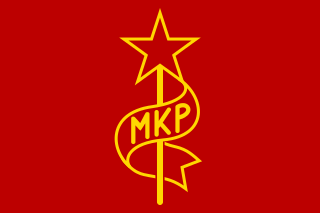
The Party of Communists in Hungary, renamed Hungarian Communist Party in October 1944, was founded on November 24, 1918, and was in power in Hungary briefly from March to August 1919 under Béla Kun and the Hungarian Soviet Republic. The communist government was overthrown by the Romanian Army and driven underground. The party regained power following World War II and held power from 1945 under the leadership of Mátyás Rákosi. In 1948 the party merged with the Social Democrats to become the Hungarian Working People's Party. The Communist Party of Hungary was a member of the Communist International.
The Communists had spent the last year and a half tying up loose ends in their bid for total power. They began the final push in October 1947, when they told their non-Communist counterparts to cooperate with a reconfigured, Communist-dominated coalition government or go into exile. By this time, Communist leader Mátyás Rákosi had become the most powerful man in the country. [7]
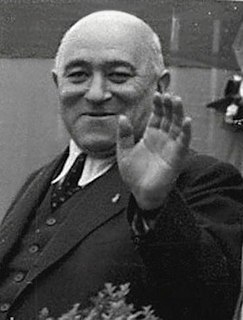
Mátyás Rákosi[ˈmaːcaːʃ ˈraːkoʃi] was a Hungarian communist politician. He was born Mátyás Rosenfeld in Ada. He was the leader of Hungary's Communist Party from 1945 to 1956 — first as General Secretary of the Hungarian Communist Party (1945–1948) and later holding the same post with the Hungarian Working People's Party (1948–1956). As such, from 1949 to 1956, he was the de facto ruler of Communist Hungary. An ardent Stalinist, his government was very loyal to the Soviet Union, and he presided over the mass imprisonment of hundreds of thousands of people and the death of thousands. American journalist John Gunther described Rákosi as "the most malevolent character I ever met in political life."
In June 1948, the Communists forced the Social Democrats to merge with them to form the Working People's Party. However, the few remaining independent-minded Social Democrats were quickly pushed out, leaving the party as essentially a renamed and enlarged Communist Party. Later in June, President Zoltán Tildy, a Smallholder, was replaced by Social Democrat-turned-Communist Árpád Szakasits. In December, Prime Minister Lajos Dinnyés was replaced by fellow Smallholder István Dobi, who made no secret of his sympathies with the Communists. On 1 January 1949, Hungary became a charter member of Comecon. On 6 February, Cardinal József Mindszenty, the spiritual leader of Hungary's Catholics and a prime opponent of Communism, was sentenced to life imprisonment. The Independent People's Front was formed in February. By the time of its first congress in March, it had become clear that it was to act as a vehicle for destroying rather than bringing together the main parties. Many of the more courageous members of the non-Communist parties had already been forced to resign in the summer of 1948, and the four remaining parties had been taken over by fellow travelers who swiftly turned their parties into loyal partners of the Communists. Three months after the election, a new constitution proclaiming Hungary a People's Republic and enshrining the principle of one-party rule was adopted. [8] Schools were nationalised, collectivisation was launched, the bureaucracy was purged, the independent press was destroyed, and the last remnants of free enterprise were eliminated. [9] Also, László Rajk, General Secretary of the Independent People's Front and Foreign Minister, who the day after the election was the main speaker at a mass demonstration where he condemned Titoist "running dogs of imperialism", praised the "brilliant strategy" of the "great leader of the peace camp", Stalin, and the "wise leadership" of Rákosi—described as Stalin's best Hungarian pupil—was himself arrested two weeks later and executed in October following a show trial. [10]

The President of the Republic of Hungary is the head of state of Hungary. The office has a largely ceremonial (figurehead) role, but may also veto legislation or send legislation to the Constitutional Court for review. Most other executive powers, such as selecting Government ministers and leading legislative initiatives, are vested in the office of the Prime Minister instead.

Zoltán Tildy, was an influential leader of Hungary, who served as Prime Minister from 1945–1946 and President from 1946 until 1948 in the post-war period before the seizure of power by Soviet-backed communists.

The Independent Smallholders, Agrarian Workers and Civic Party, known mostly by its acronym FKgP or its shortened form Independent Smallholders' Party, is a political party in Hungary. Since the 2002 parliamentary elections, the party has won no seats.
This election marked the onset of 40 years of undisguised Communist rule in Hungary. Nonetheless, the government formed after the election was still nominally a coalition. The Smallholders received the Ministries of Trade and Religion and Education in addition to the premiership, and the National Peasants Party receiving Agriculture and Construction. After the election, the Front's local committees dissolved themselves, and with them the National Peasant and Independent Smallholder local organs, although no law or ordinance was ever passed abolishing them. [8] At this time, Dobi joined the Communists.


